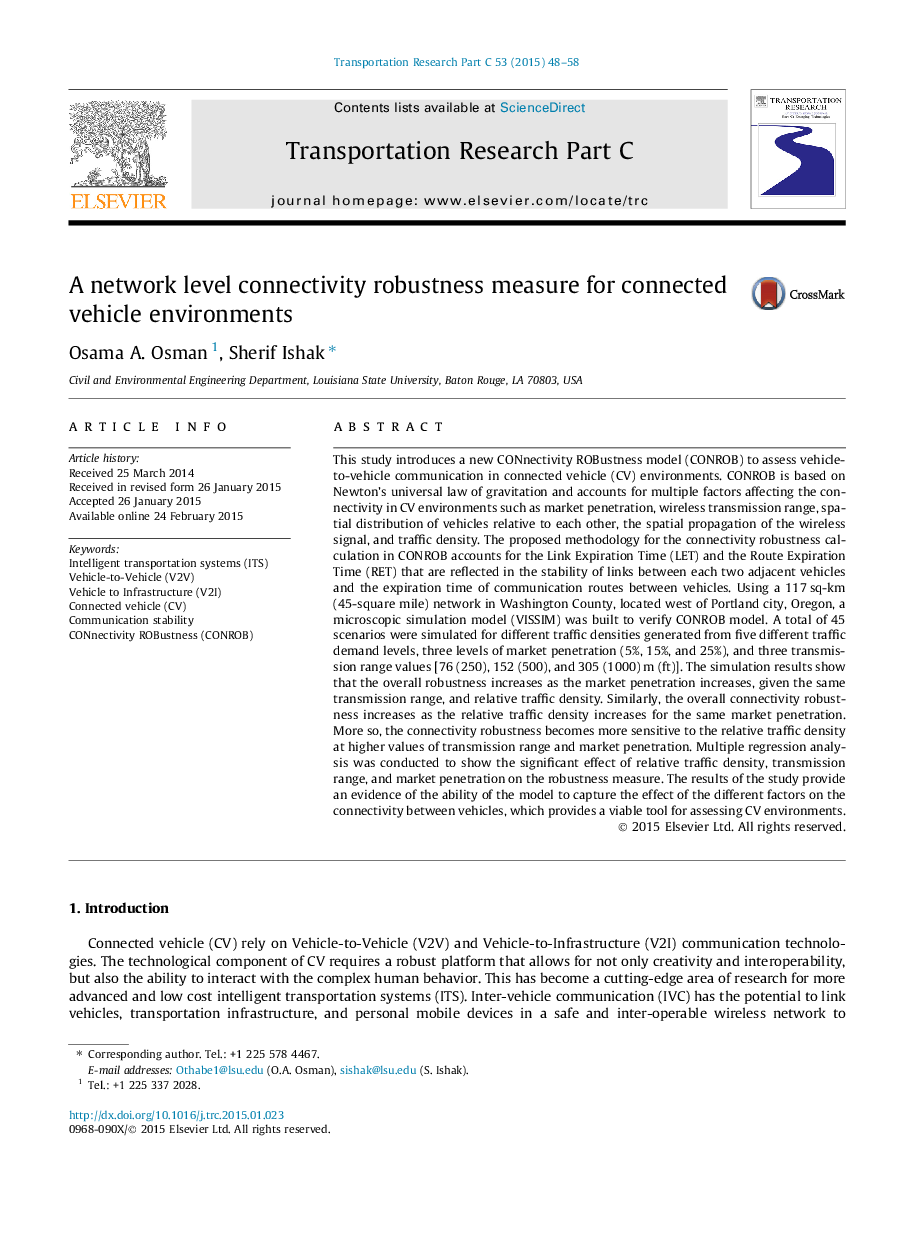| Article ID | Journal | Published Year | Pages | File Type |
|---|---|---|---|---|
| 524978 | Transportation Research Part C: Emerging Technologies | 2015 | 11 Pages |
•CONROB is a measure for the stability of communications between connected vehicles.•CONROB accounts for the market penetration, transmission range, and traffic density.•CONROB also accounts for spatial distribution of CV relative to one another.•CONROB also accounts for the spatial propagation of the wireless signal.•CONROB can be used as a design and planning tool for connected vehicle environments.
This study introduces a new CONnectivity ROBustness model (CONROB) to assess vehicle-to-vehicle communication in connected vehicle (CV) environments. CONROB is based on Newton’s universal law of gravitation and accounts for multiple factors affecting the connectivity in CV environments such as market penetration, wireless transmission range, spatial distribution of vehicles relative to each other, the spatial propagation of the wireless signal, and traffic density. The proposed methodology for the connectivity robustness calculation in CONROB accounts for the Link Expiration Time (LET) and the Route Expiration Time (RET) that are reflected in the stability of links between each two adjacent vehicles and the expiration time of communication routes between vehicles. Using a 117 sq-km (45-square mile) network in Washington County, located west of Portland city, Oregon, a microscopic simulation model (VISSIM) was built to verify CONROB model. A total of 45 scenarios were simulated for different traffic densities generated from five different traffic demand levels, three levels of market penetration (5%, 15%, and 25%), and three transmission range values [76 (250), 152 (500), and 305 (1000) m (ft)]. The simulation results show that the overall robustness increases as the market penetration increases, given the same transmission range, and relative traffic density. Similarly, the overall connectivity robustness increases as the relative traffic density increases for the same market penetration. More so, the connectivity robustness becomes more sensitive to the relative traffic density at higher values of transmission range and market penetration. Multiple regression analysis was conducted to show the significant effect of relative traffic density, transmission range, and market penetration on the robustness measure. The results of the study provide an evidence of the ability of the model to capture the effect of the different factors on the connectivity between vehicles, which provides a viable tool for assessing CV environments.
